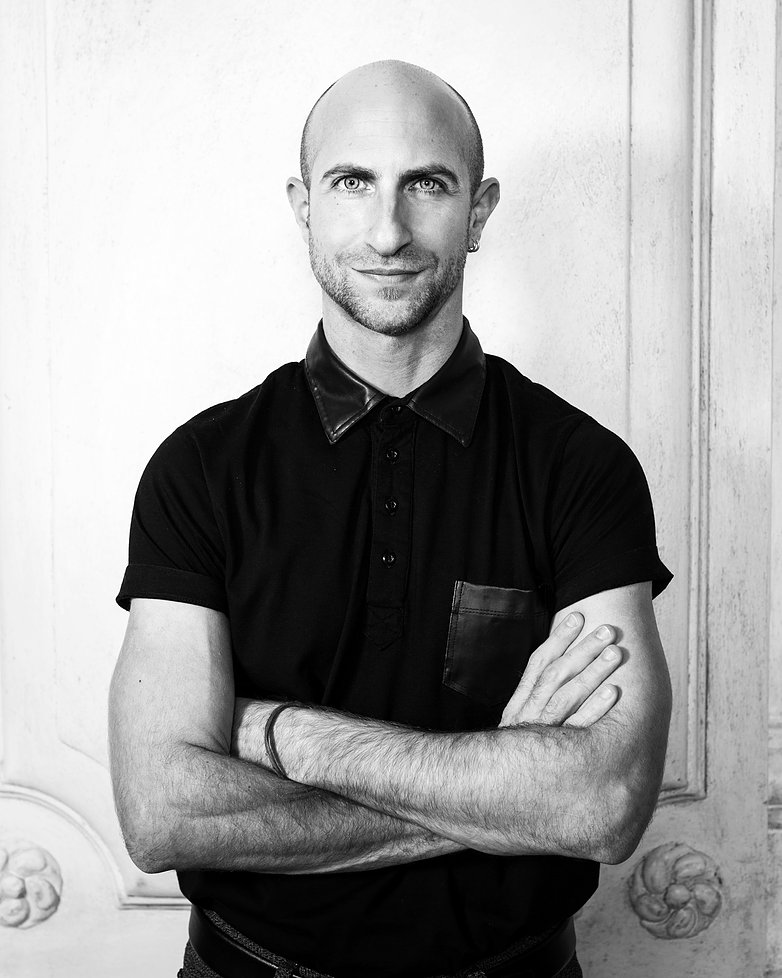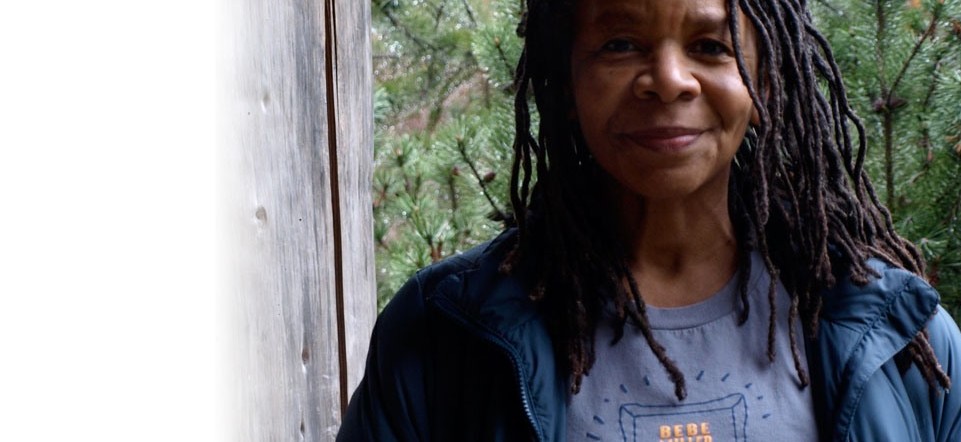In Compass, the upcoming Repertory Dance Theatre (RDT) concert, four pieces — two Martha Graham works from the 1930s, a 2019 work by Bebe Miller and a world premiere commission by Ihsan Rustem — emphasize modern dance’s potential as a vehicle for appreciating the historical significance of timeliness and timelessness. The program proves that the shelf life of choreographic expression is durable and resilient as a cultural asset.
The second main concert of RDT’s 56th season will have three performances: Nov. 18-20 at 7:30 p.m. in the Jeanné Wagner Theatre of the Rose Wagner Center for Performing Arts in downtown Salt Lake City. For those who are unable to attend in person, the concert will be available in a virtual, on-demand format, starting Nov. 26.
A highlight will be the world premiere of Hallelujah Junction by British choreographer Ihsan Rustem. Although he lives in Zurich, Rustem has traveled to the U.S. to work as resident choreographer for the NW Dance Project in Portland, Oregon so the opportunity to set a new commission for RDT became the perfect convenience. The title comes from a 1996 music score for two pianos by John Adams.
In an interview with The Utah Review, Rustem recalls how he was drawn to this minimalistic musical gem. “I was a dancer in a beautiful opera house in Munich where the choreographer used this music in a larger work with three sections in this piece,” he says. “The music was played live with two live pianists and the feeling of passion and desire drove me to go beyond and see what the journey has to offer. The pulse in the music has everything that is made for dance.”
While music by Stravinsky and Copkand has always inspired many choreographers, including Graham, Adams also has been a popular choice, even though his music was not written specifically with dance in mind. Choreographer Peter Martins, who used Adams’ Hallelujah Junction for his 2003 piece Guide to Strange Places recalled in a Playbill interview with Frank Oteri, what the composer told him, “‘All you should know is that Hallelujah Junction is a little town in Northern California that has a gas station and a grocery store.’ I said, ‘Is there anything else I should know?’ and he said no.”
Thus, one easily comprehends how Rustem sees the score as an ideal canvas to set a work where sections can be pulled out with wonderful results featuring not just the company’s dance artists as a whole but also solos, duets and other groupings. Likewise, minimalistic musical scores such as these make smooth shifts in tone and character of the movement as it progresses. This also was evidenced in the last RDT concert, featuring works by choreographer Lar Lubovitch who used scores by Steve Reich and Philip Glass, both among the best known composers of minimalism during the 1970s.
The RDT commission was a “long time coming,” Rustem adds. Nicholas Cendese, RDT artistic associate, met Rustem at a concert at Brigham Young University and the connections were made. “I remember watching rehearsals of RDT four years ago and I was impressed by the great spirit I saw and learned of what a landmark and pillar the company was with its rich history,” he says.
Thus, the commission came at the right time for Rustem, who set the work after the pandemic’s “long pause,” as he describes it. “It felt right to use the music of Hallelujah Junction on this company at this time and at this place.”
Rustem says the piece is joyful and celebratory, as a signal that it is okay to do so in relief from recent mishaps and misfortunes. And, of the more than 40 pieces he has set as a choreographer, Rustem says that he has never had a more fun time working with dancers than with this latest commission. “I cannot recall laughing so much and the dancers clearly had a good time as well,” he adds. “But, they also worked their butts off and it was impressive to see how they work as a team.”
Rustem came from a musical background. He started violin lessons at the age of six and, as he recalls, “it seemed to come quite naturally.” He played in his youth orchestra during his high school years but by the time he was 15, he realized that he disliked it. But, his musical ear also stayed with him so hearing Adams’ Hallelujah Junction ignited the choreographic interpretation. Indeed, a trained ear picks up on the waves of nuanced shifts taking place in the music. “I realized I could dissect the music and see it on stage so that the dancers could sing the movement from their bodies,” he explains.
Rustem says he set a quick pace in the piece, beginning with a series of “spicy, fast solos” introducing each member of the RDT company. Staying true to Adams’ earlier comment about the music’s plainspoken significance, he develops the work with duets emphasizing bits of gestures, which do not have a particular reason or meaning. The fast sections of the opening culminate in a dynamic crescendo before settling into a tender heart-tugging duet. While Rustem says the movement of the duet is set without specific gender roles in mind, the premiere will feature RDT dance artists Dan Higgins and Jon Kim. This is followed by another fast section, which Rustem says is “incredibly one of the fastest things he has ever done,” while weaving in the joyful lyricism embedded in the music.
Rustem says he is honored to share the playbill with works by Graham and Miller – an opportunity to present to the audience in hope they will embrace, as he calls it, the “true magic” of dance on stage.
Created in the midst of the Great Depression and the turbulence that inevitably signaled the onset of World War II, Steps in the Street by Graham came after the choreographer refused to take part in the ceremonies for the Berlin Olympics in 1936. The work’s thematic premises of desolation and isolation evoke parallels in the latest performances, coming on the heels of a longer than expected period in which concerts were cancelled because of the pandemic.
Virginie Mécène from the Martha Graham Dance Company came to Utah to set movement for the performances, featuring the RDT company as well as dancers from Utah Valley University. The piece was performed in a concert at UVU earlier this month, which also featured the Ririe-Woodbury Dance Company.
In an interview with The Utah Review, Mécène says the dancers have responded very well in learning the basic core of the Graham technique, which the legendary choreographer used to express specifically her observations and critiques of events and experiences in life. “She wanted to convey the impact of the Great Depression, such as the long breadlines, the devastation of the Dust Bowl, and the rise of fascism in Europe, the chaos which was making people feel intense despair,” Mécène explains.
Thus, gestures such as the placement of hands on the face signal exhaustion or hands on the hips for stylized contortions suggesting the tension of waiting in line for food or for those hoping for asylum and safe harbor from the forces of Nazism and anti-Semitism. At the outset, Mécène asked dancers to gather and observe images from the 1930s, as she introduced them to making contemporary connections. “Today, we see images of people waiting in line for food because of famine, refugees from countries in Middle East conflicts fleeing to safety, or those waiting to be vaccinated,” she adds.
Mécène says she was impressed with the strong sense of community among the professional and student dancers and what a “solid pillar” RDT and other institutions are for propagating a rich, diverse culture for dance’s creative power of expression. This, she adds, translates the innate egalitarian core of this particular Graham work for this particular generation of dance artists. This was evident in the dancers learning to shape the breathing and phrasing patterns in the work’s choreographic structure.
The second Graham work is Ekstasis, a solo originally choreographed in 1933 and reimagined by Mécène in 2017. This work will be performed by Angela Banchero-Kelleher, an RDT alumni dancer and UVU professor.
Mécène says there is no intact artifact of the original solo and the extant evidence is found in a few articles, which also do not reveal or clarify any visualizations of the work or its movement phrases. As referenced in a 2017 news item, in a 1980 interview, Graham said “that she was experimenting with the thrust of the pelvis. This led her to explore ‘a cycle of distortion’ that she found deeply meaningful. ‘Before Ekstasis, I had been using a more static form, trying to find a ritualistic working of the body,’ she concluded.”
But, as a result of her research and her direct work with the Graham technique, Mécène says it became a call to experiment — “having the wings to go ahead and create something I wanted to do in reimagining this pivot in her technique.” She selected music especially arranged by Catalan composer Ramon Humet, who based it on a poem by Mario Lucarda. “It gave me chills and the music was an abstraction of her poetry which represented the ideal of what the Graham technique would become,” she adds.
Miller’s work, Event, an RDT commission, was premiered in a spring concert in 2019. She builds on her own concept of leaders and accompanying dancers. She creates a gratifying choreographic narrative with text by Ain Gordon, as narrated by Miller, and a fantastically diverse sound and musical score by Michael Vargas. As noted in a review published in The Utah Review at the time of its 2019 premiere, Event subtly strips away the performative dimensions of the dancers’ personalities to reveal traits that glimpse how dancers interact with each other; not just as peers on stage but as ordinary human beings.
Gordon’s text references an abstract event involving six people (note that two dancers from the eight-member ensemble are temporarily ejected from the group right at the beginning but they return moments later). It recounts a classic sociological phenomenon about how details of an event are shared and how they change as they are handed down from one person to another.
Details do not matter as much as the ways in which we communicate and the people whom we follow, imitate and aspire to, especially in deciding who might be the most important or authoritative to heed or listen to for learning about the event. The most fascinating elements to watch for are how Miller exploited the dancers’ natural spatial relationships in movement (particularly how they overlap as well as separate from one another) and the choreography generates plenty of surprises along the way. The dancers amplify these moments with eye contact and gestures.
For tickets and more information, see the RDT website.





